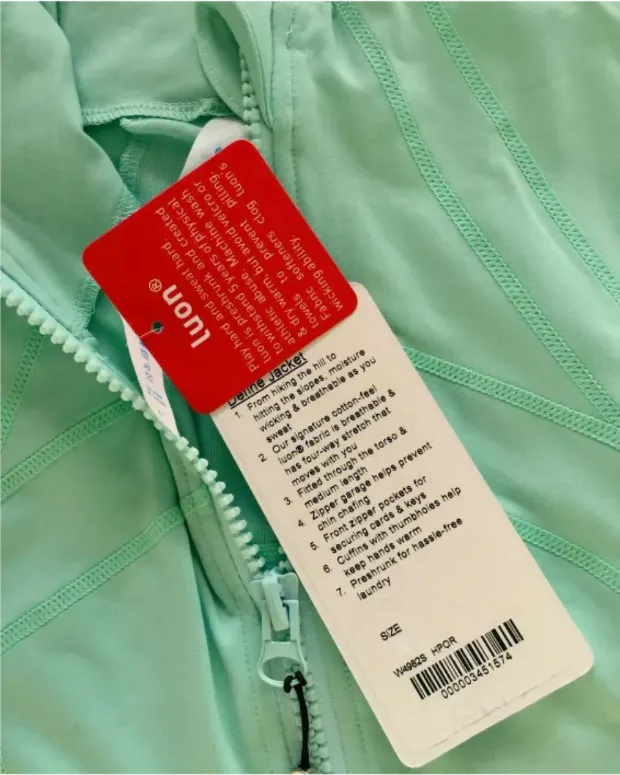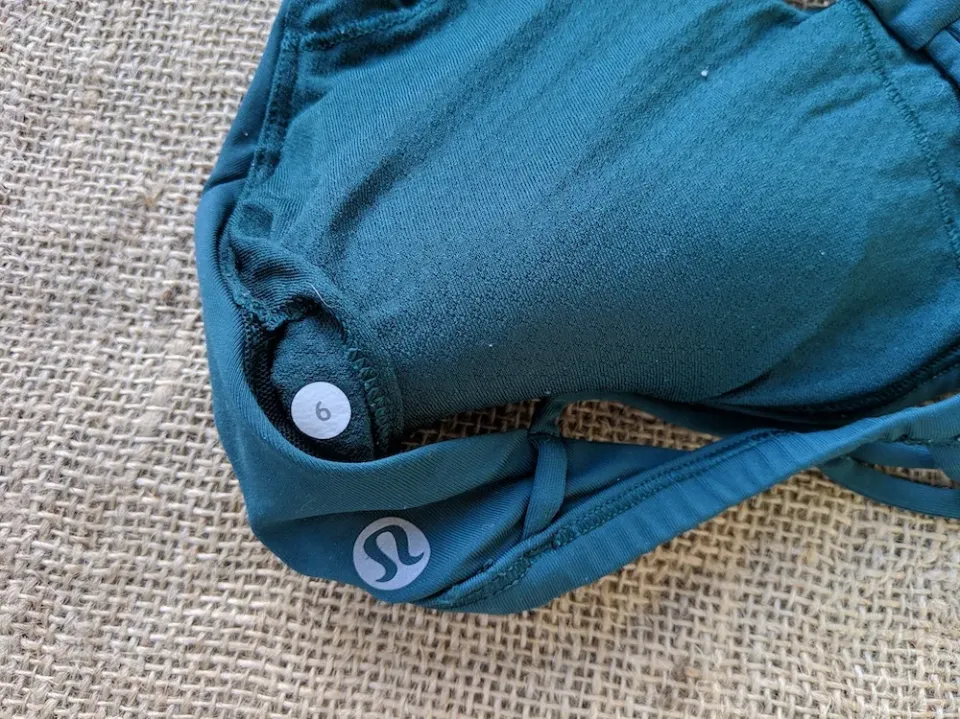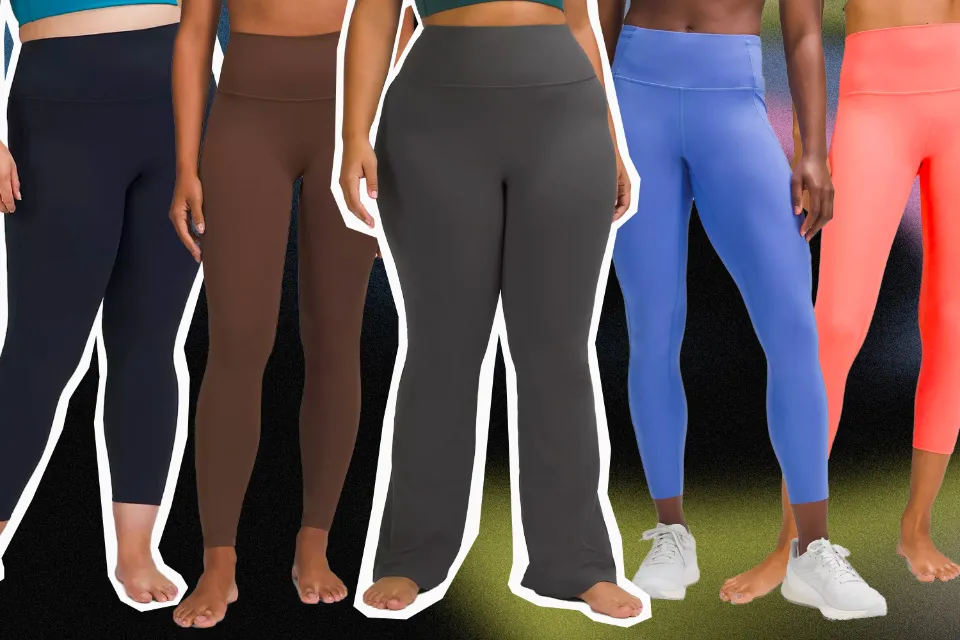You might have discovered a piece of Lululemon clothing that you’ve always wanted at a discount price but are unsure if it is real. So how to spot fake Lululemon?
You can keep an eye out for small details like size dots, stitching, or hangtags.
Here we attempt to provide a comprehensive guide to some red flags to look out for when spotting fake Lululemon.
How to Spot Fake Lululemon: 8 Ways
To ensure the piece you’re about to buy is authentic, we recommend looking closely at these various aspects:
- Hangtag (position, content, material)
- Rip tag (sewing, material, content)
- Quality (fabric, elasticity)
- Does everyone use the same type of stitching?)
- Size dots (material, placement)
- (Does Lululemon *really* produce their authentic clothing in this color?)
- Recommendations from buyers (Are these actual reviews of the products? Are all of them positive?)
- (Does the company’s logo appear reliable?)
So, now let’s see how to tell if Lululemon is fake:
1. Hang Tag

The term “hangtag” refers to the rectangular cardboard tag bearing the brand and description of the product. It is usually fastened to the left article of clothing.
It is most likely a FAKE if, however, it is attached to the rip tag, which is meant to be torn off of your garment.
2. Rip Tag
The long, white tags known as “rip tags” are sewn into a garment’s seam. They’re supposed to be easily ripped off by hand (hence the name) and if you need scissors to remove them, it’s probably fake.
Don’t interpret the presence of rip tags sewn onto the fabric as a guarantee that the item is fake; Lululemon did produce a few batches with such tags.
Leave the gleaming and silky-smooth rip tags behind. Genuine Lulu tags feel and have a rough texture similar to paper.
The rip tags on counterfeit pieces will usually come with:
- weird spelling errors such as lululemon Athleticá (should be only lululemon or lululemon Athletica without ‘ above the second A)
- wrong capitalization: eg. china instead of China
- text isn’t aligned in the center (either too much to the left or right)
- strange fonts (especially of the size)
- nonexistent or wrong color code
- fabric that’s smooth like a ribbon (by texture)
- missing lululemon logo on rip tag
- space missing between the text (‘30%lycra’ instead of ‘30% lycra’)
3. Quality
The main distinction between genuine goods and imitations is their QUALITY. Lululemon puts a massive amount of effort into innovating their clothing and even performing experiments on the gear with humidity-controlled chambers and high-end exercise machines.
Fakes typically have fabric that is extremely rough, piles easily, and loses shape over time. It might even become so stretched out that you are unable to wear it.
The rapid and erratic fading of colors is an obvious indication of a fake item. Expect some areas to experience color fading more than others. If you don’t want it to bleach, don’t even try to expose it to the sun for an extended period of time.
Also Read:
4. Stitching
Does the seam quality seem a little suspect to you? To determine whether your piece is a genuine Lulu or not, pay close attention to the distance between the stitches.
Furthermore, it’s a blatant indication that your garment is a knockoff if the seam threads are a different shade than the fabric.
5. Size Dots

As a devoted supporter of Lulu clothing, you are aware that every item of clothing has tiny size dots on it. Let’s examine the authentic size dots in more detail now.
First off, you’ll typically find them in the interior pockets of your clothing. Here’s the proper location for each piece:
- Bras – In the left bra pocket
- Leggings – In the inner pocket on the left side or at the back of the waistband’s inner lining
- Shorts – In the left zip pocket or the back zip pocket
- Tights – If they have pockets, it will be inside the left pocket
6. Color & Pattern
You’d be surprised to learn that many imitations come in colors that the real Lulu has never even attempted to produce!
Check the Lulu website (lululemon.com) to see if an item is available in the desired color before making a purchase. If not, run!
7. Seller Reviews
Always read the seller’s reviews before making an online purchase. To avoid detection, many of them may be offering a mix of real and imitation Lulu clothing for sale.
Report any negative reviews that claim the buyer is selling fakes to the platform’s administrators and look for another seller. Only purchase if all of the reviews are favorable.
8. the Reflective Logo
It’s not an authentic Lululemon logo if the reflective logo is elongated, less circular, doesn’t reflect light, and generally seems off. Additionally, the logo on fake items only easily peels off after a few washes.
Remember, though, that the male logo is a little different. So even if the equipment is designed for men, it might still be genuine. Just be sure to thoroughly examine it against genuine Lulu products.
Where to Buy Original Lululemon Yoga Wear?
You can buy new Lululemon items at Lululemon shops or through their official online store.
Additionally, a few Lulu outlet stores exist; you can look up their locations here.
Conclusion: How to Spot Fake Lululemon
Hopefully, by now you’re a confident Lululemon expert and you can spot fake Lulu!
Whatever brand you choose to purchase, someone will always be selling fake goods and attempting to dupe customers.
However, now that you are aware of what to look out for (the tags, logos, fabric, etc..) and can use your power as a customer.
Also Read: How to Tell If Yeezy Slides Are Fake?
FAQs
Do Fake Lululemons Have Size Dots?
They do, but they are distinct, so yes. The size dots on fake Lulu pieces are frequently placed incorrectly (instead of in the left pocket, as we mentioned above), and they frequently have a plastic film covering them.
What Side Are Lululemon Tags On?
Hangtags are affixed to tops at the left lower end, close to the hip. On the left side of bottoms, hangtags are placed at or just below the seam of the waistband.
Are Lululemon Clothes Made in China?
The manufacturing of Lululemon’s products is split roughly 67% in China and 33% in the United States., India, Taiwan, Indonesia, Canada, Israel, and Israel.




